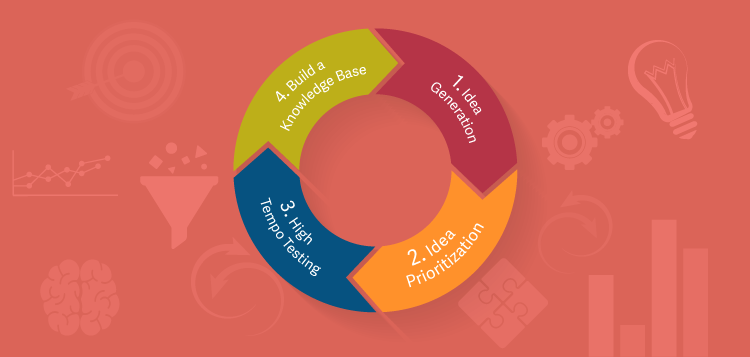
by Steve Wolf | Apr 20, 2017 | Business
Skylab Apps on Gamification & Social Learning
Gamification places emphasis on human motivation.
Social Learning Theory posits that people learn from one another, via observation, imitation, and modeling.
The Skylab Apps platform has been built operating under the Social Learning theory that has often been called a bridge between behaviorist and cognitive learning theories because it encompasses attention, memory, and motivation.
Gamification has gained traction in recent years as an effective way of engaging users to perform actions in contexts that would otherwise be considered tedious and undesirable. Education is an area in which user engagement could have the greatest impact on success, with some advantages for users to improve or get better comprehension. Our goal in doing so is to foster greater user engagement using the system and thereby promote an environment better suited for active social learning.
Skylab has built a Proprietary algorithm that places emphasis on commonly understood human habits and then leveraged technology to gamify the experience of Learning for example.
“It’s Play That Helps Us Do Serious Things Better.”
“When you have a Game Like Platform where knowledge is applied, knowledge becomes a resource. The more you know the better you are at the Game.”
–Dean Grey: SkyLab Apps CEO
In essence, it’s “Human-Focused Design” as opposed to “Function-Focused Design” Skylab has thought and developed The Gamification Engine The perfect blend of Science, Psychology and Technology.

Imagine having a way to communicate (Smart Chat), engage, teach (Multimedia Channels, Gamified Trainings, Recognition Wall), reward (Contests, Habit Tracking), and monetize (In-App Purchases) your affinity group or community within one platform that you own.
That’s what we do!
Unconsciously, the key points below are enhanced in the user’s behavior through Gamification:
Epic Meaning & Calling
Core Drive is a player’s belief that he is doing something greater than himself or that he was “chosen” to do something. This creates a player who devotes a lot of his time to maintaining a forum or helping to create things for the entire community.

Development & Accomplishment
The internal motivation of making progress, developing skills, and eventually overcoming challenges drives community.
Empowerment of Creativity & Feedback
Users are engaged in a creative process of repeatedly figuring things out and trying different combinations. People need ways to express their creativity, and to be able to see the results of their creativity, receive feedback, and respond in turn.
Ownership & Possession
When a player feels ownership, he/she is motivated to make what he/she owns better and own even more. If a person spends a lot of time to customize his/her profile or his/her avatar, he/she automatically feels more ownership towards it too.
Social Influence & Relatedness
All the social elements that drive people, including: mentorship, acceptance, social responses, companionship, as well as competition and envy.
Scarcity & Impatience
The fact that people can’t get something right now motivates them to think about it all day long. Many games have Appointment Dynamics within them (come back 2 hours later to get your reward).
Unpredictability & Curiosity
Drive is wanting to find out what will happen next. If you don’t know what’s going to happen, your brain is engaged and you think about it often. This core drive is activated whenever a company runs a sweepstake or lottery program to engage users.

Challenges
Users complete a series of steps to fulfill the challenge. Each step completed gives you a small reward, discount, or badge (e.g. 50% Discount at Starbucks). By completing all the steps you will earn the big reward. The goal here is to be the Pokemon Scavenger Hunt for businesses, thus getting people out of the house/office to capture their experiences in the real world.

App Sharing
App Sharing creates a virality effect that drives community growth for the client, sponsor awareness, and behavioural data for the brand.This is critical for our advertisers and Skylab’s business model; as our success is tied to the growth of the client’s audience and behavioural data. For the user, it provides a fun way to engage in the growth of the cause/movement, creating a deeper desire to belong.

Voting
Voting invites the user to share selfies or photos for a reward as they engage within a popularity contest. People get excited about the recognition and rewards inside a private community where they feel the odds are higher than social media. As they increase engagement within their community, they feed a desire to belong.
The overall goal of the App Sharing & Voting contest is to maximize the MAU/DAU (Monthly or Daily Active User) of their user base with gamification tactics, thus instantly increasing the value of the company.

At Skylab, Social Learning & Gamification are the Core Drive. They permit to empower the followings:

SOCIAL NETWORKS
It puts the learner at the center of the people, information, and learning content they need. Comments on content increase community knowledge and understanding as well as drive engagement.

STRENGTHENING TEAMWORK
Community content enhances collaboration. Notes, comments, and ratings specific to your organization improve communication among teams and the organization as a whole.
 NIELSEN’S 1-9-90 RULE
NIELSEN’S 1-9-90 RULE
According to expert Jakob Nielsen, 90% of participants don’t contribute, though they find value in what they read and observe. The next 9% add to existing discussions, with 1% creating most commentary and giving the community food for thought.
AMPLIFY THE LEARNING PROCESS
Social learning connects people with relevant content, learning assets, and expert information specific to an organization’s unique culture. This combination of content, commentary, and community amplifies learning and helps you maximize your return on learning investments.

CREATING NEW CONNECTIONS
Social learning offers access to colleagues outside an employee’s traditional sphere, which can spark innovation and leverage connections to employees they may not otherwise engage with.
SECURITY & PROTECTION
A good social learning platform protects your information, while allowing employees to find, create, and share knowledge, learning assets, and expertise with their colleagues – without compromising security.
Game elements that can facilitate learning
Social learning is often coupled with game mechanics when you want to take audience engagement to the next level. We define social learning as an online learning experience where learners are able to see what other learners are doing and control other learners’ gameplay or content. With social learning, you can send messages to other learners, challenge a colleague to a challenge, leave a souvenir, and even create content to change the learning experience. The most common form of social learning that you can implement is a leaderboard. Simply seeing how well other learners are doing can get your audience excited and motivated to take training over and over again.
Doing our jobs is serious business, but learning about it doesn’t have to be. We’ve helped innovative organizations around the world make learning that’s as addictive as Candy Crush.
Some of the potential benefits of successful gamification initiatives include:
- giving users ownership of their learning
- opportunities for identity work through taking on alternate selves
- freedom to fail and try again without negative repercussions
- chances to increase fun and joy
- opportunities for differentiated instruction
- making learning visible
- providing a manageable set of subtasks and tasks
- inspiring students to discover intrinsic motivators for learning
- motivating users with low levels of motivation

by Steve Wolf | Feb 28, 2017 | Business
Growth Mindset: 10 Principles to Growth: Skylab Apps Case Study
Many people begin to experiment and fail to see the desired results. They’re often missing on the key ingredient: The Growth Mindset. Let’s apply this method to Skylab Apps.
Skylab Apps was founded in 2015 by Dean Grey. He has the vision of growing a global company motivated by the idea that people would adopt the technology built by his company. Skylab Apps makes a white label community building platform that allows the app owner to track, train, grow and monetize their user, customer, clients, follower or fans.
“Company owners want to grow and they have a vague idea of how to get there. But, they lack the key principles to achieve their goals. They lack of a general understanding behind the practice.”
Dean Grey

What if you could increase your Growth rate? What if you could finally start to optimize your processes? Growth is the answer to these questions…
This article is about to give you a few principles to help guide you into your quest for Growth. It is a guide that we have lived by here at Skylab Apps, always testing, poking around and customer/client-centric.
The Infographic : You must be busy. So instead of having you read a ton of text, I distilled the main principles in the following infographic:
1. Learning from experience
Growth is all about testing hypothesis. “Testing hypothesis” means running a battery of tests to see what works and what doesn’t.We test a hypothesis because we believe that no one else has the answer to our questions. What may work in another business, will not necessarily work with yours.
When Dean Grey, Founder of Skylab Apps started Zooplr, his vision was to build a state of the art mobile platform that would allow companies and brands to engage, track and train all of the community member. After successfully exiting Zooplr, and Tags, he continued on with the same vision to build Skylab Apps. Except this time, he was going to take it all the way home
When you test something, you can either validate or invalidate your hypothesis. Most people see this through a success / failure lens. There is no such thing as a failure in Growth because you want to learn. Success happens when you learn, failure when you don’t.
It’s that simple. If your experiment failed and you’ve gained a ton of new insights, that’s a success.Learning allows you to make better educated guesses and to launch even more successful experiments.
Don’t expect to have a lot of success at the beginning but the more you understand your product & customers, the more successful your tests will become. In the case of Skylab Apps, learning from experience didn’t necessarily mean failure. In fact, as mentioned before, exiting the two prior companies successfully set Dean up on the correct pat to launch Skylab Apps with all oh the experience and data from his two prior companies.
2. Data-Driven
 Running a digital business enables you to measure every step of the way. You can easily track what everyone is doing on your app.You know more about your consumers than anyone else in business. Use these insights! The best Growth people use that to their advantage. You need to use data in every decision you take.
Running a digital business enables you to measure every step of the way. You can easily track what everyone is doing on your app.You know more about your consumers than anyone else in business. Use these insights! The best Growth people use that to their advantage. You need to use data in every decision you take.
When we speak about data, most people think about analytics tools such as Google Analytics or KISSmetrics. Never forget about other valuable sources of insights that you have available.
Customer interviews are a perfect source of insights, to help you drive Growth & Product Development.
Make sure that you invest into your Analytics stack early on to avoid learning about the wrong things… (Invalidating the wrong hypothesis will have disastrous impact on your business)
3. Innovative Testing
Growth is all about testing innovative and creative ideas. Don’t limit yourself to what your competitors are doing, you have the freedom to do whatever you want. Be innovative and challenge the status-quo: it’s not because you always had a 3-step signup process that it is necessarily the best process.
Don’t limit yourself to what your competitors are doing, you have the freedom to do whatever you want. Be innovative and challenge the status-quo: it’s not because you always had a 3-step signup process that it is necessarily the best process.
Look for flaws in your current processes and improve them until you’re satisfied with the results.
Growth is all about being innovative. If you just copy what’s going on in your space, you’ll limit your potential results terribly.
4. Always go further
Growth never stops. Even if you have a conversion rate from Trial to Paid of 95%, there are always things that you can improve.
When you think everything is optimized, take a one-week break. Go back to work and think again: Where are we losing most of our users? Where can we have more impact?
You should never be satisfied by the Growth you’re getting. You can always go further.
5. Process first
Launching experiments in only one part of the story. The process is what actually makes everything possible.
You can’t really sustain your Growth efforts without a process. You’ll start to launch experiments but you’ll soon fail because you’ll lose track of what’s happening.The process is what allows you to create a repeatable, scalable and predictable machine. Without a process, you’ll fail to show results over the long-term. Design your processes early on. They won’t be perfect but iterate and improve them as you move forward.

6. Authentic & Sustainable Growth
As Brian Balfour said,
“All Growth is not equal”. Are you looking for MAU (Monthly Active Users) or are you looking for long-term customers?
You can’t really sustain your Growth efforts without a process. You’ll start to launch experiments but you’ll soon fail because you’ll lose track of what’s happening. The process is what allows you to create a repeatable, scalable and predictable machine. Without a process, you’ll fail to show results over the long-term. Design your processes early on. They won’t be perfect but iterate and improve them as you move forward. Don’t think about Growth as something that can yield enormous result for the short term. It certainly can. However…
Look at Growth as a way to build your business over the long-term. Launch experiments that can have a long-lasting impact on your growth.
7. Start Small – MVT
You generally don’t have to go through 100 hours of development to test your hypothesis.
If you want to launch several tests per week, you’ll need to launch “Minimum Viable Tests”. In other words: What’s the minimum test that you can launch to test an hypothesis? You need to understand that Growth is an iterative process. Starting small will allow you to build up on your success (or lack thereof). If you launch a small test and it fails, you’ll have a greater “Time to Learning” than if you redesigned your entire on-boarding. Starting small may be be counter intuitive. But it’s the only way that you can create a positive impact on your business.
8. Customer-Centric

.
If you fail to be customer-centric, you’ll only be able to drive short-term. Your customers will be annoyed and you’ll fail to retain them over the long term.
Increasing your Growth is only one part of the equation. If you squeeze out every dollar of your customer’s wallet without delivering more value, you’ll piss off more than a few people. The best way to be customer-centric is to examine their desired outcome. Are your experiments helping them to achieve their mission, their goals?
9. Ethic
Some people really don’t care about ethics and that’s a mistake in terms of brand image.
The dating sector is a quite good example. They’re basically creating fake profiles and generating discussions with you so that you start your paid membership. A beautiful person of the opposite sex will strike up a conversation and show interest in you. You can only chat back if you start a paid subscription. But, wait! There is no one on the other side… It’s just a bot! Even if this trick is increasing their Growth, are they delivering value? What would people think about that? Having some sense of ethics is imperative if you want to seek Authentic Growth and avoid damaging your long-term brand.
10. Company-wide mission
This is a team sport and everyone should be involved. Everyone should be able to contribute their own ideas to your backlog.Relevant people should also be able to get involved into discussions on specific ideas. You’re designing a new onboarding flow? Talk to the person who designed the last one. If you don’t involve people within your company, you’ll get into political issues and they’ll slow down your efforts.Involving them can only be a good thing. The worse that can happen is that they’ll share valuable insights and help you launch better experiments.
Growth. Growth. Growth.
These principles should help you to get started with Growth. Don’t waste too much time and start experimenting as soon as you can. However… Make sure that you set yourself up for success by creating customer-centric, ethical and long-lasting growth…
for success by creating customer-centric, ethical and long-lasting growth…
Skylabapps.com enables to grow your community thanks to the Gamification Engine which uses Gamified features.
Check out Skylab’s Clients websites & apps. They’ve trusted us for growth.
http://www.allysian.com/ – http://www.amway.com/ – http://www.centerpointe.com/v2/ https://www.goodlovinfoods.com/ http://www.alticor.com/ http://www.eastwestartists.com/ http://www.mindmovies.com/ http://www.xterraplanet.com/ http://blowbunny.com/ http://www.betterplanetpaper.com/
















 Running a digital business enables you to measure every step of the way. You can easily track what everyone is doing on your app.You know more about your consumers than anyone else in business. Use these insights! The best Growth people use that to their advantage. You need to use data in every decision you take.
Running a digital business enables you to measure every step of the way. You can easily track what everyone is doing on your app.You know more about your consumers than anyone else in business. Use these insights! The best Growth people use that to their advantage. You need to use data in every decision you take.


